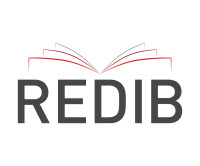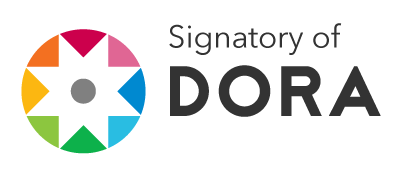Ciencia Abierta: desafíos y oportunidades para Uruguay y el Sur Global
Resumen
Uruguay, al igual que más de 190 países miembros, ha suscrito la Recomendación de Ciencia Abierta de Unesco que se ha aprobado en noviembre de 2021. La ciencia abierta es un ecosistema de procesos interconectados construido sobre distintos movimientos: acceso abierto, datos abiertos, código abierto e investigación abierta reproducible, entre otros, cuyo objetivo es hacer las investigaciones científicas, datos y divulgación accesibles e inclusivos para todos los niveles de la sociedad.
La implementación de políticas de ciencia abierta requiere equilibrar cuidadosamente sus costos y beneficios. Las experiencias de algunos países parecen ser exitosas, aunque la factibilidad de algunos aspectos plantea dudas en la comunidad científica. Los países del Sur Global tienen una oportunidad para posicionarse y beneficiarse de esta transición, pero deben estar un paso adelante y ser parte de su construcción.
En este trabajo se revisan los principales conceptos para la implementación de un sistema de ciencia abierta y se realizan algunas consideraciones sobre el sistema de evaluación científica actual con perspectiva de futuro. Finalmente, se evalúan algunas dificultades que pueden enfrentar los países del Sur Global y se proponen posibles soluciones.
Descargas
Citas
AfricArXiv. (2021). Peer Review. https://info.africarxiv.org/peer-review/
Agesic. (2012). Plan de Acción Uruguay 2012. https://www.gub.uy/agencia-gobierno-electronico-sociedad-informacion-conocimiento/sites/agencia-gobierno-electronico-sociedad-informacion-conocimiento/files/2019-02/plan_accion_uruguay_2012_0.pdf
Alleva, K. (2021, enero 1). Carta de apoyo a pedidos de #waiver a editoriales. [Tweet]. @k_alle_va. https://twitter.com/k_alle_va/status/1426997766039953417
Armeni, K., Brinkman, L., Carlsson, R., Eerland, A., Fijten, R., Fondberg, R., Heininga, V. E., Heunis, S., Koh, W. Q., Masselink, M., Moran, N., Baoill, A. Ó., Sarafoglou, A., Schettino, A., Schwamm, H., Sjoerds, Z., Teperek, M., van den Akker, O. R., van’t Veer, A., & Zurita-Milla, R. (2021). Towards wide-scale adoption of open science practices: The role of open science communities. Science and Public Policy, 1-7. https://doi.org/10.1093/scipol/scab039
Baker, M. (2015). Reproducibility crisis: Blame it on the antibodies. Nature, 521(7552), 274-276. https://doi.org/10.1038/521274a
Baker, M. (2016). Statisticians issue warning on Pvalues. Nature, 531. https://doi.org/10.1038/nature.2016.19503
Barch, D. M. (2021). Biological Psychiatry: Global Open Science—Supporting Open Science and Global Diversity in Research. Biological Psychiatry Global Open Science, 1(1), 2. https://doi.org/10.1016/j.bpsgos.2021.04.004
Barzilai, N. (2017). Open Science and Intellectual Property: How to conciliate ?
Bornmann, L. (2015). Alternative metrics in scientometrics: A meta-analysis of research into three altmetrics. Scientometrics, 103(3), 1123-1144. https://doi.org/10.1007/s11192-015-1565-y
Bornmann, L., & Marx, W. (2016). The journal Impact Factor and alternative metrics. EMBO reports, 17(8), 1094-1097. https://doi.org/10.15252/embr.201642823
Bosman, J., Frantsvåg, J. E., Kramer, B., Langlais, P.-C., & Proudman, V. (2021). OA Diamond Journals Study. Part 1: Findings. 1-32. https://doi.org/10.5281/zenodo.4558704
Breimelyte, J. (2018). Open Biobanks: Reframing intellectual property rights in biobanking. Universitat Autònoma de Barcelona.
Budroni, P. (2021). About Open Science and Autonomy of Science. Data Intelligence, 3(1), 52-63. https://doi.org/10.1162/dint_a_00077
Button, K. S., Ioannidis, J. P. A., Mokrysz, C., Nosek, B. A., Flint, J., Robinson, E. S. J., & Munafò, M. R. (2013). Power failure: Why small sample size undermines the reliability of neuroscience. Nature Reviews Neuroscience, 14(5), 365-376. https://doi.org/10.1038/nrn3475
Carneiro, C. F. D., Queiroz, V. G. S., Moulin, T. C., Carvalho, C. A. M., Haas, C. B., Rayêe, D., Henshall, D. E., De-Souza, E. A., Espinelli, F., Boos, F. Z., Guercio, G. D., Costa, I. R., Hajdu, K. L., Modrák, M., Tan, P. B., Burgess, S. J., Guerra, S. F. S., Bortoluzzi, V. T., & Amaral, O. B. (2019). Comparing quality of reporting between preprints and peer-reviewed articles in the biomedical literature. bioRxiv, 3, 1-19. https://doi.org/10.1101/581892
Caron, B. R. (2021). Virtue and Values of Open Science. En OSH (pp. 1-8). PubPub. https://doi.org/10.21428/8bbb7f85.6734f1e1
Chambers, C. (2019). What’s next for Registered Reports? Nature, 573(7773), 187-189. https://doi.org/10.1038/d41586-019-02674-6
Clark, J. (2021). Open Science—A Question of Trust. Data Intelligence, 3(1), 64-70. https://doi.org/10.1162/dint_a_00078
Crespo Fajardo, José Luis, C. (2019). Acceso abierto vía diamante en revistas científicas latinoamericanas. Tlatemoani: revista académica de investigación, 10(30), 170-187.
D’Agostino, M., Samuel, N. O., Sarol, M. J., de Cosio, F. G., Marti, M., Luo, T., Brooks, I., & Espinal, M. (2018). Open data and public health. Revista Panamericana de Salud Pública, 42, e66-e66. https://doi.org/10.26633/RPSP.2018.66
Dinsmore, A., Allen, L., & Dolby, K. (2014). Alternative Perspectives on Impact: The Potential of ALMs and Altmetrics to Inform Funders about Research Impact. PLoS Biology, 12(11), 12-15. https://doi.org/10.1371/journal.pbio.1002003
Düwell, M. (2019). Editorial: Open Science and Ethics. Ethical Theory and Moral Practice, December. https://doi.org/10.1007/s10677-019-10053-3
European Commission. (2017a). IPR, Open Science and Technology Transfer. Jrc Science Hub Communities. https://doi.org/10.2760/423138
European Commission. (2017b). Next-generation metrics: Responsible metrics and evaluation for open science: Directorate-General for Research and Innovation.
Faff, R. W., Shao, X., Alqahtani, F., Atif, M., Biaaek-Jaworska, A., Chen, A., Duppati, G., Escobar, M., Finta, M. A., JENY, A., Li, Y., Machado, M. A. V., Nishi, T., Nguyen, B., Noh, J.-E., Reichenecker, J.-A., Sakawa, H., Vaportzis, E., Widyawati, L., … Zhou, Q. (2017). Increasing the Discoverability of Non-English Language Research Papers: A Reverse-Engineering Application of the Pitching Research Template. SSRN Electronic Journal, May, 1-57. https://doi.org/10.2139/ssrn.2948707
Fausto, S. (2013). The Evolution of Open Access: A brief history. SciELO in Perspective. https://blog.scielo.org/en/2013/10/21/the-evolution-of-open-access-a-brief-history/
Ferguson, C. L. (2020). Open Peer Review. En Serials Review (Vol. 46, Número 4, pp. 286-291). https://doi.org/10.1080/00987913.2020.1850039
Fernández Pinto, M. (2020). Open Science for private Interests? How the Logic of Open Science Contributes to the Commercialization of Research. Frontiers in Research Metrics and Analytics, 5(November), 1-10. https://doi.org/10.3389/frma.2020.588331
Fidler, F., & Wilcox, J. (2021). Reproducibility of Scientific Results. En E. N. Zalta (Ed.), The Stanford Encyclopedia of Philosophy (Summer 202). Metaphysics Research Lab, Stanford University.
Follett, R., & Strezov, V. (2015). An analysis of citizen science based research: Usage and publication patterns. PLoS ONE, 10(11), 1-14. https://doi.org/10.1371/journal.pone.0143687
Gewin, V. (2016). An open mind on open data. Nature, 529(7584), 117-119. https://doi.org/10.1038/NJ7584-117A
Gitter, D. M. (2010). The challenges of achieving open-source sharing of biobank data. Biotechnology Law Report, 29(6), 623-635. https://doi.org/10.1089/blr.2010.9909
Government adopters. (2021). International Open Data Charter. https://opendatacharter.net/government-adopters/
Guerrero, S., Dujardin, G., Cabrera-Andrade, A., Paz-y-Miño, C., Indacochea, A., Inglés-Ferrándiz, M., Nadimpalli, H. P., Collu, N., Dublanche, Y., De Mingo, I., & Camargo, D. (2016). Analysis and implementation of an electronic laboratory notebook in a biomedical research institute. PLoS ONE, 11(8), 1-11. https://doi.org/10.1371/journal.pone.0160428
Gurstein, M. B. (2011). Open data: Empowering the empowered or effective data use for everyone? First Monday. https://doi.org/10.5210/fm.v16i2.3316
Høydalsvik, S., & Lieungh, E. (2020). What is Open Science? Open Science Talk, 1. https://doi.org/10.7557/19.5266
Huang, C. K., Neylon, C., Hosking, R., Montgomery, L., Wilson, K. S., Ozaygen, A., & Brookes-Kenworthy, C. (2020). Evaluating the impact of open access policies on research institutions. eLife, 9, 1-13. https://doi.org/10.7554/ELIFE.57067
Huijboom, N., & Van den Broek, T. (2011). Open data: An International comparison of strategies. European Journal of ePractice, 12(1), 1-13.
Huston, P., Edge, V., & Bernier, E. (2019). Reaping the benefits of Open Data in public health. Canada Communicable Disease Report, 45(10), 252-256. https://doi.org/10.14745/ccdr.v45i10a01
Iyandemye, J., & Thomas, M. P. (2019). Low income countries have the highest percentages of open access publication: A systematic computational analysis of the biomedical literature. PLoS ONE, 14(7), 1-11. https://doi.org/10.1371/journal.pone.0220229
Jolly, M., Fletcher, A. C., & Bourne, P. E. (2012). Ten Simple Rules to Protect Your Intellectual Property. PLoS Computational Biology, 8(11), 1-4. https://doi.org/10.1371/journal.pcbi.1002766
Kapczynski, A. (2017). Order without intellectual property law: Open science in influenza. Cornell Law Review, 102(6), 1539-1648. https://doi.org/10.31228/osf.io/6ep4x
Karp, N. A., & Fry, D. (2021). What is the optimum design for my animal experiment? BMJ Open Science, 5(1), 1-18. https://doi.org/10.1136/bmjos-2020-100126
Klein, M., Broadwell, P., Farb, S. E., & Grappone, T. (2019). Comparing published scientific journal articles to their pre-print versions. International Journal on Digital Libraries, 20(4), 335-350. https://doi.org/10.1007/s00799-018-0234-1
Kobayashi, S., Kane, T. B., & Paton, C. (2018). The Privacy and Security Implications of Open Data in Healthcare. Yearbook of medical informatics, 27(1), 41-47. https://doi.org/10.1055/s-0038-1641201
Kowaltowski, A., Oliveira, M., Silber, A., & Chaimovich, H. (2021, agosto). The push for open access is making science less inclusive. Times Higher Education.
Lampert, D., Lindorfer, M., Prem, E., Irran, J., & Fermín Serrano, S. (2017). New indicators for open science—Possible ways of measuring the uptake and impact of open science. fteval Journal for Research and Technology Policy Evaluation, 44(44), 50-56. https://doi.org/10.22163/fteval.2017.276
Leonelli, S. (2017). Mutual Learning Exercise: Open Science – Altmetrics and Rewards: Incentives and Rewards to engage in Open Science Activities. Thematic Report No 3.
Lin, J. (2018). Preprints growth rate ten times higher than journal articlestle. Crossref blog. https://www.crossref.org/blog/preprints-growth-rate-ten-times-higher-than-journal-articles/
Matters of significance. (2013). Nature Methods, 10(9), 805-805. https://doi.org/10.1038/nmeth.2638
McKiernan, G. (2000). arXiv.org: The Los Alamos National Laboratory e‐print server. International Journal on Grey Literature, 1(3), 127-138. https://doi.org/10.1108/14666180010345564
Ministère de l’Enseignement Supérieur de la Recherche et de l’Innovation. (2018). NATIONAL PLAN FOR OPEN SCIENCE. esr.gouv.fr, July, 12.
Muente-Kunigami, A., & Serale, F. (2018). Los datos abiertos en América Latina y el Caribe. Inter-American Development Bank. https://doi.org/10.18235/0001202
Mwangi, K. W., Mainye, N., Ouso, D. O., Esoh, K., Muraya, A. W., Mwangi, C. K., Naitore, C., Karega, P., Kibet-Rono, G., Musundi, S., Mutisya, J., Mwangi, E., Mgawe, C., Miruka, S., & Kibet, C. K. (2021). Open Science in Kenya: Where Are We? Frontiers in Research Metrics and Analytics, 6(May). https://doi.org/10.3389/frma.2021.669675
Naciones Unidas. (1948). Declaración Universal de Derechos Humanos. https://www.un.org/es/about-us/universal-declaration-of-human-rights
Narock, T., & Goldstein, E. B. (2019). Quantifying the growth of preprint services hosted by the center for open science. Publications, 7(2), 1-14. https://doi.org/10.3390/publications7020044
Nazarovets, S., & Skalaban, A. (2019). Plan S. Accepted not Denied. Science and Innovations, 12(202), 80-84. https://doi.org/10.29235/1818-9857-2019-12-80-84
Nylenna, M., & Simonsen, S. (2006). Scientific misconduct: A new approach to prevention. The Lancet, 367(9526), 1882-1884. https://doi.org/10.1016/S0140-6736(06)68821-1
Open Data Inventory. (2021). Uruguay Open Data Inventory Profile. https://odin.opendatawatch.com/Report/countryProfileUpdated/odin-test.akroninc.net/Report/countryProfileUpdated/URY?year=2020
Paruelo, J. M., Sierra, M., & Prieto, D. (2020). Bricks or people? Investing more and better in Science, a dilemma for South American countries. En OSF Preprints. https://doi.org/10.31219/osf.io/chf5y
Patnaik, P. R. (2016). Scientific Misconduct in India: Causes and Perpetuation. Science and Engineering Ethics, 22(4), 1245-1249. https://doi.org/10.1007/s11948-015-9677-6
Perkel, J. (2020). PanLingua: A free online tool that makes bioRxiv multilingual. Nature Index. https://www.natureindex.com/news-blog/panlingua-free-online-tool-that-makes-biorxiv-preprint-multilingual
Phinney, D. G. (2020). Open access versus accessibility: Evaluating Plan S. Cytotherapy, 22(8), 399. https://doi.org/10.1016/j.jcyt.2020.03.435
Piwowar, H. (2013). Value all research products. Nature, 493, 159.
Pontika, N., Knoth, P., Cancellieri, M., & Pearce, S. (2015). Fostering open science to research using a taxonomy and an elearning portal. ACM International Conference Proceeding Series, 21-22-Octo. https://doi.org/10.1145/2809563.2809571
Poupon, V., Seyller, A., & Rouleau, G. A. (2017). The Tanenbaum Open Science Institute: Leading a Paradigm Shift at the Montreal Neurological Institute. Neuron, 95(5), 1002-1006. https://doi.org/10.1016/j.neuron.2017.07.026
Power, H. (2018). Predatory Publishing: How to Safely Navigate the Waters of Open Access. The Canadian journal of nursing research = Revue canadienne de recherche en sciences infirmieres, 50(1), 3-8. https://doi.org/10.1177/0844562117748287
Prieto, D. (2018). Make research-paper databases multilingual. Nature, 560(7716), 29-29. https://doi.org/10.1038/d41586-018-05844-0
Ramachandran, R., Bugbee, K., & Murphy, K. (2021). From Open Data to Open Science. Earth and Space Science, 8(5). https://doi.org/10.1029/2020EA001562
Robson, S. G., Baum, M. A., Beaudry, J., Beitner, J., Brohmer, H., Chin, J. M., Jasko, K., Kouros, C. D., Laukkonen, R. E., Moreau, D., Searston, R. A., Slagter, H. A., Steffens, N. K., & Tangen, J. M. (2021). Promoting Open Science: A holistic approach to changing behaviour. En PsyArChiv preprints (Número April). https://doi.org/10.31234/osf.io/zn7vt
Roskams-Edris, D. (2020). Intellectual Property Policy at The Neuro, an Open Science Institute. Qeios, 1-20. https://doi.org/10.32388/omuwel
Rouder, J. N. (2016). The what, why, and how of born-open data. Behavior Research Methods, 48(3), 1062-1069. https://doi.org/10.3758/s13428-015-0630-z
Royal Society Publishing. (2021). Registered Reports. Royal Society Open Science. https://royalsocietypublishing.org/rsos/registered-reports
Ruijer, E., Grimmelikhuijsen, S., & Meijer, A. (2017). Open data for democracy: Developing a theoretical framework for open data use. Government Information Quarterly, 34(1), 45-52. https://doi.org/10.1016/j.giq.2017.01.001
Sanjana, N. E. (2021). Voices of the new generation: Open science is good for science (and for you). Nature Reviews Molecular Cell Biology, 0123456789, 41580. https://doi.org/10.1038/s41580-021-00414-1
Schapira, M., & Harding, R. J. (2019). Open laboratory notebooks: Good for science, good for society, good for scientists. F1000Research, 8, 1-24. https://doi.org/10.12688/f1000research.17710.2
Sever, R., Eisen, M., & Inglis, J. (2019). Plan u: Universal access to scientific and medical research via funder preprint mandates. PLoS Biology, 17(6), 2-5. https://doi.org/10.1371/journal.pbio.3000273
Smith, R. (1999). Pros and cons of open peer review. Nature Neuroscience, 2(3), 197-198. https://doi.org/10.1038/6295
Stoddart, C. (2016). Is there a reproducibility crisis in science? Nature, 3-5. https://doi.org/10.1038/d41586-019-00067-3
The Cape Town Open Education Declaration. (2007).
Tosar, J. P. (2022). ¿Acceso abierto es pagar para publicar? Desafíos para difundir el conocimiento en un contexto de precios al alza. Informatio.
Tremouilhac, P., Nguyen, A., Huang, Y. C., Kotov, S., Lütjohann, D. S., Hübsch, F., Jung, N., & Bräse, S. (2017). Chemotion ELN: An Open Source electronic lab notebook for chemists in academia. Journal of Cheminformatics, 9(1), 1-13. https://doi.org/10.1186/s13321-017-0240-0
Unesco, E. B. (2019). 206 ex/9 (Número March).
Unidad de Evaluación y Monitoreo de ANII. (2018). Informe de monitoreo. Sistema Nacional de Investigadores 2008-2018.
van der Vooren, R., & Dujso, E. (2019). Transition costs for open science in the Netherlands Connecting and Accelerating (p. 22).
Vega, C., & Manganiello, Lisbeth. (2020). Technical editing: Scientific Journals and Open Science. Ciencia en Revolución, 6(19). https://doi.org/10.5281/zenodo.4625763
Vicente-Saez, R., & Martínez-Fuentes, C. (2018). Open Science now: A systematic literature review for an integrated definition. Journal of Business Research, 88, 428-436. https://doi.org/10.1016/j.jbusres.2017.12.043
Weir, K. (2015). A reproducibility crisis? Monitor on Psychology, 46(9), 39.
Wicherts, J. M. (2016). Peer review quality and transparency of the peer-review process in open access and subscription journals. PLoS ONE, 11(1). https://doi.org/10.1371/journal.pone.0147913
Wittenburg, P. (2021). Open Science and Data Science. Data Intelligence, 3(1), 95-105. https://doi.org/10.1162/dint_a_00082
Wood, J. (2021). Embedding Open Science in Reality. Data Intelligence, 3(1), 106-115. https://doi.org/10.1162/dint_a_00083
Woolston, C. (2021). Impact factor abandoned by Dutch university in hiring and promotion decisions. Nature, 595(7867), 462-462. https://doi.org/10.1038/d41586-021-01759-5
World Bank. (2021). The World by income. https://datatopics.worldbank.org/world-development-indicators/the-world-by-income-and-region.html
Derechos de autor 2022 Daniel Prieto

Esta obra está bajo licencia internacional Creative Commons Reconocimiento 4.0.







.jpg)




















